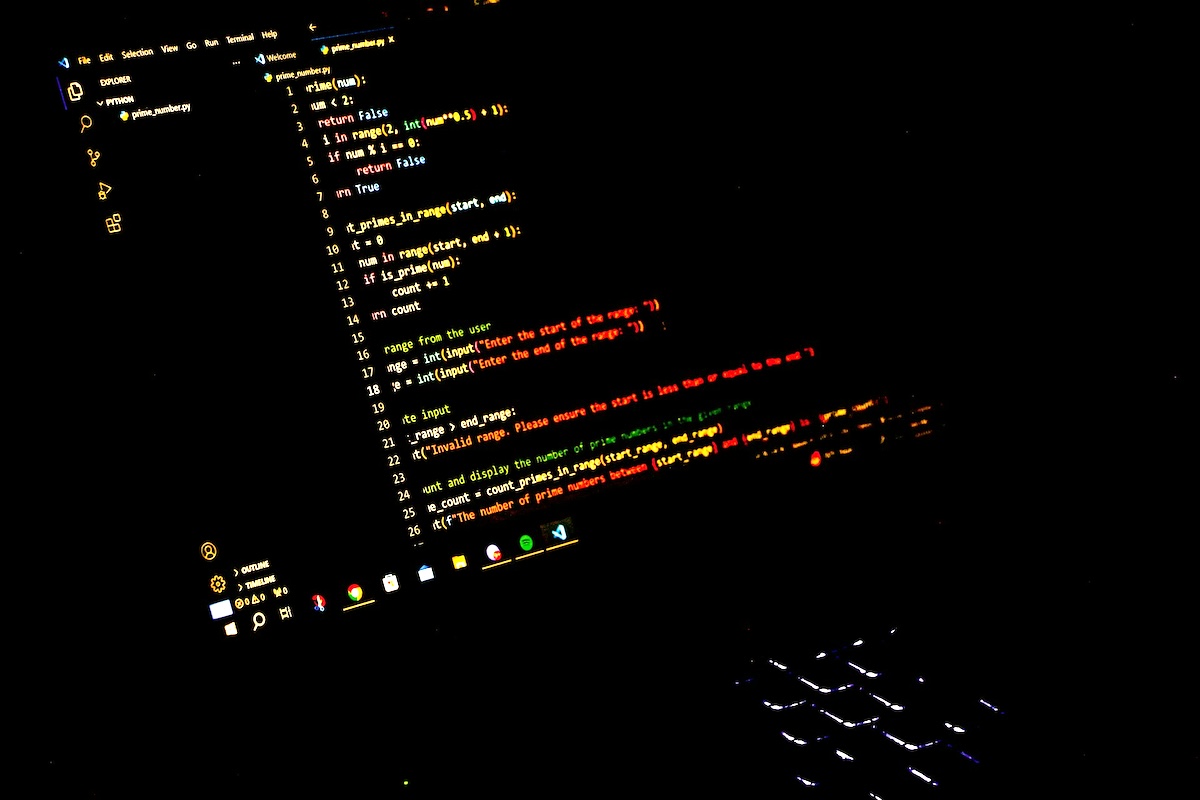Skift Take
Event tech has been on a roller coaster ride since the start of the Covid pandemic. Now companies have to adapt to new realities and find their unique space in the market in order to survive and thrive.
The virtual event tech bubble has burst. A perfect storm is hitting event tech, and virtual event platforms are taking the brunt of it.
Not all event tech companies are struggling, but the virtual event-driven highs experienced during the peak of the Covid pandemic are now a distant memory.
Comparing event tech’s popularity now with 2020 or 2021 is not fair. A comparison with 2019 offers a more holistic picture of where we are.
The good news is that in many cases, there is a significant increase in activity and company size now compared to before the Covid pandemic. Still, this won’t help the hundreds of people impacted by layoffs at Hopin, Bizzabo, and Hubilo.
The current state of the event tech sector varies, depending on who you ask. Funding trends play a big part here. “The collapse of the funding environment has caused most startups to evaluate every spend to extend runway,” said Twine CEO Lawrence Coburn.
“Many companies, like Bizzabo, are adjusting their strategies to prioritize financial efficiency as we face an economic downturn and possible recession,” said Bizzabo co-founder and chief marketing officer Alon Alroy as the company announced it was cutting almost 30 percent of staff.
EventMobi CEO Bob Vaez says its business is steady, and customers are simply mixing up formats. “We are not seeing a dip or surge in general demand. Which to me means the industry as a whole is staying steady, the format is changing,” said Vaez.
According to Splash CEO Eric Holmen, “the sweeping return of in-person events has benefited Splash […] We see nearly half of the thousands of events on our platform are now in-person, from a pandemic low of “none” in-person.”
RainFocus, a software-as-a-service event management platform that focuses on data insights as its main unique selling, announced it increased headcount by 126% year-on-year and hired a new chief people officer.
Planning for What’s Next
We would be foolish to ignore that the Covid pandemic could force further lockdowns. The war in Ukraine and significant political events around the world could also escalate and significantly impact meetings and events. In fact, any significant disruption to travel and in-person gatherings would once shine the spotlight on virtual events and create another virtual event tech bubble.
Despite labor shortages, in-person events are thriving. Challenges are being brushed aside, due to the pent-up demand and the desire to meet face to face. Yet, attendance numbers are down, with most large international events struggling to come close to 2019 attendance figures. Questions remain about supplier capacity and how travel policies and remote or hybrid workforces will ultimately impact meetings.
With this backdrop, event tech companies anticipated the return to in-person meetings and took different approaches to boost product offerings. The big goal was to provide complete event tech solutions for virtual, hybrid, and in-person meetings.
Mergers and Acquisitions
Mergers and acquisition activity peaked in 2021 with some clear patterns to the consolidation. Many event tech companies acquired tools that supported onsite audiences to fully support hybrid events in preparation for the return to in-person events.
Hopin acquired two companies with powerful mobile event apps, Topi and Attendify. It also acquired Boomset, known for its badging and lead retrieval solutions. Hopin’s acquisitions provided a way to quickly expand beyond virtual events and add support for in-person and hybrid events.
Virtual events depend heavily on the quality of video streams. Every event tech company offering streams developed virtual event solutions invested in this area. Some took the acquisition route. Hopin acquired StreamYard, Cvent acquired Shoflo, and Bizzabo acquired Teevid. Others partnered with established providers like Restream or white-labeled and integrated existing solutions.
Registration was also a priority. Earlier this year, MeetingPlay merged with Aventri and later acquired event registration company Eventcore. Previously, 6Connex acquired Eventory, Cadmium acquired EventRebels, and Swapcard acquired Avolio.
Some of the most significant acquisitions were made by companies with a strong foothold in the corporate world that wanted to bring the most up-to-date virtual event solutions to clients. Cisco’s acquisition of Socio and Intrado’s acquisition of Hubb are two examples of this. Interestingly, both companies have since rebranded, the former to Webex Events (formerly Socio) and the latter to Notified.
A more extreme pivot involved Digitell, one of the few companies working in virtual events long before the Covid pandemic. It was acquired by healthcare content firm BroadcastMed, and the technology is now being used exclusively within this sector.
2022 has seen more mergers and acquisitions, albeit at a slower rate, but those in the know expect this to continue. “Going forward, we expect there will be fewer solutions available, as many will dissolve or consolidate,” said Alroy.
Rumors are that some event tech startups born out of the Covid pandemic are looking to sell, and established companies are open to acquiring. EventsAir CEO Matthew Donegan-Ryan may be looking to leverage the company’s recent funding and long-term profitability. “We will evaluate acquisition opportunities that will provide us with additional world-class products and services to offer our client base,” said Donegan-Ryan
Covid Driven Platform Evolution
Event platforms morphed and pivoted throughout the Covid pandemic. Notified president Ben Chodor said, “The needs of our customers have shifted focus multiple times over the last few years — we’ve had to understand their requirements at each stage and provide the resources that will lead them to success.”
These deep shifts in event tech are no easy task, particularly when happening so fast. “Event tech is complicated. You must deliver reliability, customization, and security while supporting multiple formats, use cases, geographies, and an increase in audience expectations,” said Alroy.
As platforms evolved, so did their marketing. The changes in event tech are no longer happening at such a frantic pace, but there is more pressure to find new marketing angles.
In the spring of 2020, there was a Covid pandemic-induced virtual event platform gold rush. For vendors that had viable solutions, this was a simple market to address. Planners were desperately looking for tools that could support their online event experiences. A few screenshots of the platform in action, even static mockups in some cases, on a planner-focused website were enough to generate interest and sales calls.
By the summer of 2021, with many destinations reopening to in-person events, the marketing focus shifted towards hybrid events. Virtual platforms and mobile event apps worked hand in hand to cater to both online and offline audiences.
Today this focus is shifting once again. “Event tech space has reached saturation. As the market flooded with new solutions, event organizers grew overwhelmed with options and underwhelmed with some of the tech being offered,” said Alroy.
Compared to 2020 and 2021, planners are not interested in virtual event tech. On the other hand, vendors are looking for new ways to showcase products to planners and even new markets to address. Those that offer solutions for in-person events have, in many cases, ‘unpivoted’ away from virtual events. While those that only support virtual events are looking at fresh ways to make a case for their solutions.
Added Focus on Enterprise
Corporate clients have always been the preferred target market for most event tech companies. Running hundreds of repeatable, standardized meetings and events using one platform allows for a stable and profitable business. InEvent CEO Pedro Góes is seeing a hard push of companies going enterprise. “As the economy slowed down, investor expectations did not. The plan to generate more revenue has been to offer more products and solutions, increasing prices, and customer annual contract value,” he said.
In corporate environments, event tech platforms do more than run online meetings or virtual events. They are a depository of video content, a hub for online community conversations, and can also support hybrid and in-person events. Once implemented securely according to corporate standards, this is a tempting prospect for many but also a challenging one.
While many platforms are capable of delivering value to corporations, the sales process for enterprise usage is extremely complex and may require significant customization of the product. The scale and scope of implementation is also very different from only focusing on events, making this a highly appealing but complex and resource-heavy strategy.
“The biggest challenges in marketing to the corporate sector is cutting through the clutter and noise to make sure that our unique value proposition and differentiators stand out in what feels like a sea of event tech vendors,” said Chodor. He recognizes the challenge but is confident that Notified’s focus on data security, its experience, and agility in matching clients differentiates the brand from its competitors.
Companies like ON24 already have a strong stake in the enterprise model and are focused on building on existing relationships. “ON24 has experienced several previous downturns, and our growth is poised to continue as businesses need to nurture, and develop close relationships with customers,” said Tessa Barron, ON24’s vice president of marketing.
While the corporate market is very appealing to event tech vendors, companies like EventsAir remain focused on other markets. Our primary outbound marketing focus is on associations and agencies which historically have made up the biggest sectors of our client base,” said Donegan-Ryan.
Hybrid Strategies, Not Just Events
The concept of hybrid events has been part of the sales pitch of virtually every event tech company. In reality, planners find creating hybrid events challenging. In addition, the concept can be interpreted in many different ways. Many opt to refer to events as live or in-person + virtual. Case in point, Cvent Connect, billed as being in Las Vegas and virtual.
On-demand content is also a big part of the hybrid event concept and a big component of current marketing pitches, such as in the case of EventsAir. ”We have shifted our marketing focus to support the return to in-person events with a live virtual component or in-person events that capture content for future use,” said CEO Donegan-Ryan.
Perhaps the biggest shift in the hybrid events concept is the idea of organizations running different types of events as part of a larger strategic approach. The core idea is that creating a hybrid strategy or hybrid event program allows organizations to reach different audiences at different points that best suits each audience member.
“We’ve focused our inbound and outbound marketing campaigns that support planners who are trying to build a total event program that optimizes the mix between the different event formats,” said Patrick Smith, Cvent senior vice president and chief marketing officer. Cvent is confident that this type of program creates valuable efficiencies for organizations.
RainFocus uses the term ‘unified’ to describe its platform that can be used to manage hybrid, in-person, and virtual events. “A unified platform that enables them to access all their event data, across multiple events, in one place,” said RainFocus CEO JR Sherman. He believes virtual events are here to stay but adds that “marketers must listen and learn from their event data and provide engaging content.”
Thinking Beyond the Meeting Planner
The desire for corporate business is widespread, with some companies looking beyond the teams organizing standard meetings and events. “Increasingly, we are also seeing demand from people ops teams, specifically learning and development teams, as distributed companies look to be more intentional about building connection among their workers,” said Twine CEO Lawrence Coburn. As a result, Twine is shifting its focus to supporting employee connection for remote teams, whatever format that takes. “Our goal is to make Twine part of the daily fabric of how a distributed team operates,” added Coburn.
Glisser, on the other hand, is betting on its modular platform to attract the corporate market. The company is looking beyond the traditional meeting planning roles towards marketers by positioning itself as mar-tech rather than event tech.
“We’re also seeing the customers profiles that deliver these meetings — whether that’s marketers, internal comms professionals, or learning and development managers — beginning to use virtual platforms strategically, for the medium and long term, for financial or environmentally-conscious reasons, rather than just a COVID response,” said Michael Piddock, the founder of Glisser.
Alternative Channels and Markets
Integrating event tech tools is an area that also changed dramatically since the start of the Covid pandemic. With event tech platforms increasingly following the same development standards as consumer technology, this has opened many possibilities for integration. Companies like SpotMe, Hopin, and Webex Events have app marketplaces offering ready-to-go integrations with other platforms. Bizzabo went further by marketing its platform as an operating system.
Twine is taking advantage of Zoom’s app marketplace as its core distribution channel. The company still offers a standalone product, as well as Slack integration, but according to CEO Lawrence Coburn is embracing a product-led growth strategy focused on distribution within Zoom’s ecosystem.
Some event tech platforms have long had deep connections with video production. Kaltura and BrandLive are two examples. One less obvious example is InEvent, a relative newcomer to video production after investing in creating a custom video studio as part of its virtual events platform features. The company is dividing its focus on attracting AV professionals as well as event professionals. “We see video as a big part of the InEvent future,” said InEvent CEO Pedro Góes. This shared focus may be part of a strategy to conquer the ‘creator market’ that incorporates social media influencers and individual media publishers. This is a sector highlighted by Góes as a potentially attractive alternative to enterprise.
Sustainability Credentials
Meetyoo, a German-based virtual event tech platform, remains focused only on virtual events. A big part of its marketing strategy is promoting carbon neutral events. It goes beyond the simple claim that virtual events are more environmentally friendly than in-person events. “We are actively reducing and offsetting our carbon footprint with the help of Plan A. But also by helping our customers to do so,” said Dr. Michael Geisser, Meetyoo’s chief revenue officer.
A sustainability dashboard is next on Meetyoo’s roadmap. It plans to externally certify the new tool that it hopes will allow it to differentiate itself from the competition. The company reports that the number of customers seriously considering sustainability goals is growing rapidly, especially in Europe. “Sustainability is key for us and not just a new marketing strategy. We are absolutely convinced that climate change is the biggest challenge for mankind, and we believe that we can help to find solutions,” said Geisser.
The mix of marketing approaches, target markets, and even distribution channels varies across different event tech platforms. This space is evolving as companies look to find their footing after the roller coaster ride created by the Covid pandemic. Some companies may not be around to see the dust settle. Still, as we better understand the appetite for event tech going forward, we can look back and appreciate the impressive evolution of the sector.





